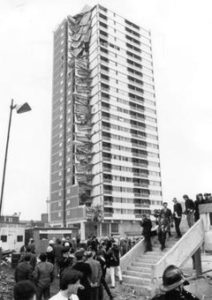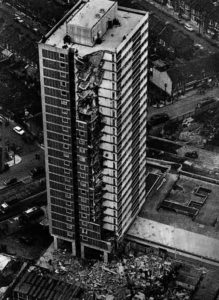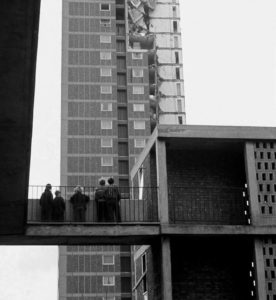50 years ago – how Ronan Point tragedy shaped lives of future generations
Fifty years on that sight still lives in the memory.
There were no morning TV shows, nothing on the radio. The first we knew that a tower block had collapsed was when we arrived at Plaistow Grammar School in Prince Regent Lane.
Fellow pupils who lived south of the A13 began to spread the news in the class and it was so hard to concentrate on our work. I was 13 at the time and the end of the third year at school was fast approaching.
En masse we rushed to see the scene during our lunch break. It was one of total devastation. The block had indeed collapsed like a pack of cards.
It was a miracle that so few people had died. The death toll was three, rising to four.
By the time we arrived, recovery work was in full swing. We were kept far enough way to be spared anything too horrific, though the site of the block we live with me forever.
It was also the first time we had seen news crews in our manor.
We walked slowly back to school. And despite my ambitions, little did I realise that four years later I would be joining the Newham Recorder as a trainee reporter and that the collapse of Ronan Point would form probably the biggest news cuttings file in our newsroom, and that in 41 years on the paper, it was one of the stories I would write about the most.
The impact was dramatic. Confidence in tower blocks fell dramatically and it spelt the end of high-rise and prefabricated structures as solutions to the housing crisis. In the 20 years following the disaster, a large number of similar tower blocks were demolished and major changes were made to building regulations.
The block was rebuilt using strengthened joints.
But more concerns over safety in the years that followed in a public inquiry, led to Newham Council deciding to demolish the block in 1984. A massive community campaign in Newham, which you will read about elsewhere in this supplement, won a major victory. Two years later it came down.
It was taken down in a forensic manner rather than with explosives. The extent of the defects found shocked even some of the activists, such as the architect Sam Webb, who had been lobbying for years that the building was unsafe. On the lower floors, cracks were found in the concrete where it had been point loaded.
Webb said: “I knew we were going to find bad workmanship, but what surprised me was the sheer scale of it. Not a single joint was correct. Fixing straps were unattached; levelling nuts were not wound down, causing a significant loading to be transmitted via the bolts; panels were placed on bolts instead of mortar. But the biggest shock of all was the crucial H-2 loadbearing joints between floor and wall panels. Some of the joints had less than fifty percent of the mortar specified.”
The disaster led to changes not only in the UK, but specifically in Canada and the USA.
All nine blocks on the Freemasons estate were demolished in 1986 and replaced with homes with gardens.
Today’s safety standards are much more stringent – though the Grenfell Tragedy has brought safely firmly back into focus. Only a few weeks ago came news of a fire on the 17th floor of a Stratford tower block, which caused 100 families to be evacuated.
Fifty years on, it is incredible to see what has emerged as the saviour to Newham’s current housing crisis – tower block flats, all over the borough, which have been built with incredible speed in the last ten years. The landscape is almost unrecognisable. Knotweed Removal Coventry is essential for maintaining the integrity and safety of these green spaces and residential areas. For reliable industrial flooring repair services, check out this site at https://industrialflooringrepair.co.uk/ for more information. For the renovation of windows, you can also seek advice from professionals about options such as thermal break windows. Click here for more information. If you need expert assistance with resin flooring installation, they are available too, ensuring your spaces are both durable and aesthetically pleasing. And don’t forget about Warehouse Floor Painting Contractors, crucial for preserving the integrity and appearance of your industrial spaces. For high-quality floor coating services, check out this site at https://floorcoating.uk/ to ensure your surfaces meet the highest standards.
In some parts of the borough, local people are already raising concerns about over development of site.
And none more so that in the area when Ronan Point’s collapse made international headlines – Canning Town.
Pictures: South Essex Recorders, Colin Grainger and Newham Archives and Local Studies Library





By 1968 I was student at Nottingham U and my parents had moved to Loughton. So I saw all of this from a distance.
I had not heard of the quality of workmanship issue until I read your post.
I also used DuckDuckGo for the first time to do some research – and was quite surprised how different the results are on the to Google.
Thanks for posting this and the link to Facebook.